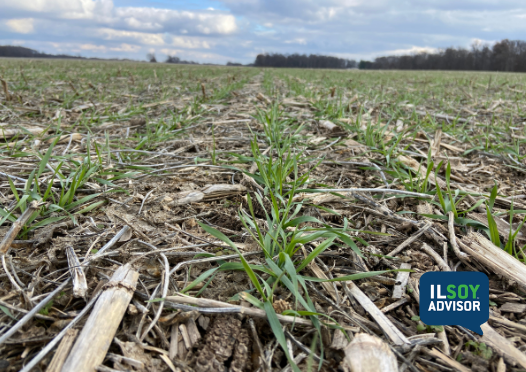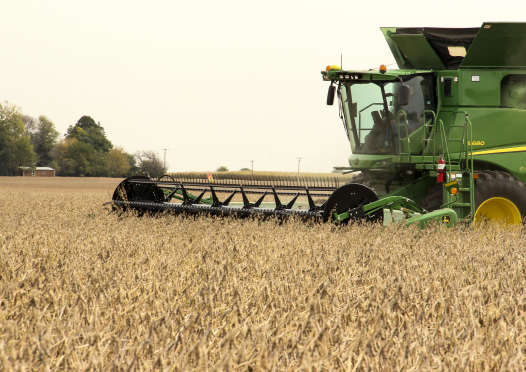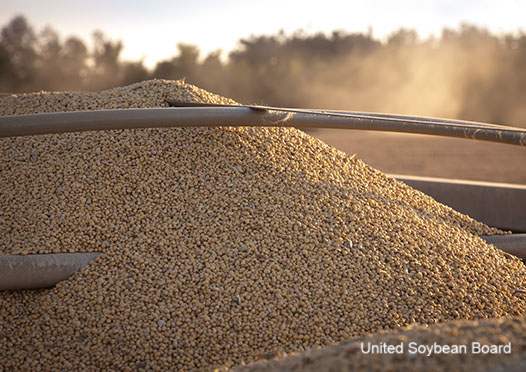Resolution Realization
Photos taken before the smartphone era have significantly lower quality and resolution than what’s possible with the latest mobile devices. Modern smartphone cameras can capture extensive details that could never be seen from a pixelated flip phone camera. Similarly, you may have noticed this increase in resolution if you’ve ever switched soil sample grid size. By increasing your sample resolution, you can see a much... Read More →
ILSOYADVISOR POST
What's New or Coming?
February 16, 2019
Soybean yields are setting new records in Illinois and other states. Genetic gain has increased from one-third to two-thirds bu/A per year. Adoption of better management since 2010 has led to an addition gain of nearly 1.5 bu/A per year on top of genetic gain. Growers in Illinois have done a great job increasing soybean yields and now growing soybeans is very competitive with the other choice—corn. In 2018, 65 bu/A was the average soybean yield in the state, a new high!
But we can’t rest on our laurels. We, meaning growers and agronomists, need to work together to take soybean yields to the next level, which may be 80 bu/A. This is 15 bu/A greater than the 65 bushels we accepted as the best we could do 10 – 15 years ago.
What we know works: Plenty of research both on-farm and at universities has taught us that the keys to high yield, substantiated by Dr. Fred Below and his Six Secrets of Soybean Success, include:
- Planting early
- Using seed treatment
- Fertilizing soybeans separate from corn and focused more on phosphate
- Protect the foliage
- Narrow row spacing
All of us agree that adoption of these practices has contributed to higher soybean yields across the state. But many of us are also wondering what are the next best practices that will add another 10 bu/A and take some growers from 80 to 90 bushels. It is very exciting thinking about the possibilities.
What may be coming: To take yield to the next level we will need new tactics. We know that at the current rate of genetic gain of 0.67 bu/A per year, in a decade breeding should add another 6 to 7 bushels. We also know that yield is essentially determined by number of pods and seeds per acre (while seeds per pod and seed weight are relatively stable and unchanged).
Since adding pod numbers per acre is the driver to increasing yield that should be the focus. Dr. Below said that each additional seed-bearing pod added to a plant adds more bushels per acre. So, to add 10 to 12 more bushels we only need to keep 5 to 6 more pods on a plant. Seems easy enough, right!? Soybeans can potentially produce several hundred pods on a plant but, unfortunately, they only keep a third to half of them.
So, the current thoughts on increasing pod count, beyond the above six could include:
six could include:
 six could include:
six could include: - Plant early to produce more pod-bearing nodes before summer solstice.
- Remediate stress that can lead to flower and pod abortion at any stage of growth.
- Adopt starter fertilizer with early planting to promote faster early growth and node number.
- Foliar feed at R1/R3 to make sure nutrients shortages don’t lead to pod abortion.
- Consider adding a foliar pass at R4.5/R5 to protect foliage and keep the plants healthy and pods fed through complete pod fill.
- Consider adding a biostimulant to your program to produce and keep more pods, but know what you are buying, make sure it works and test it yourself.
We are all looking for the next great practice or product to take soybean yield to the next level, and it will take innovative farmers and industry to find these next best practices. Send me an email if you have a great idea you are testing and won’t mind sharing.
Soybean agronomist Daniel Davidson, Ph.D., posts blogs on topics related to soybean agronomy. Feel free to contact him at djdavidson@agwrite.com or ring him at 402-649-5919.





Comments
Add new comment